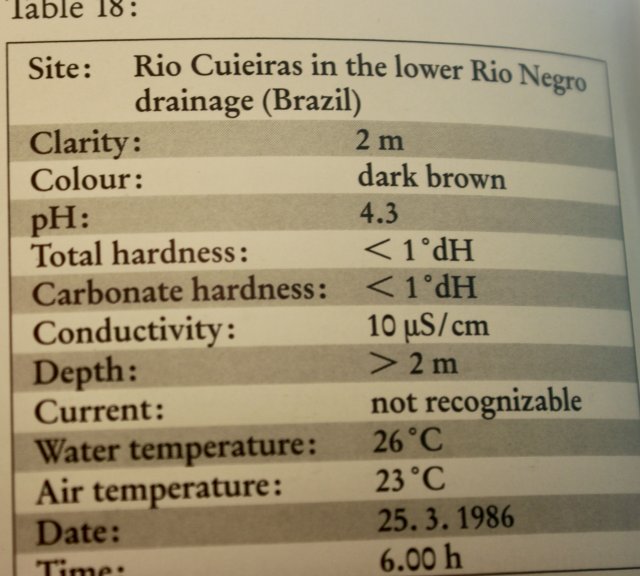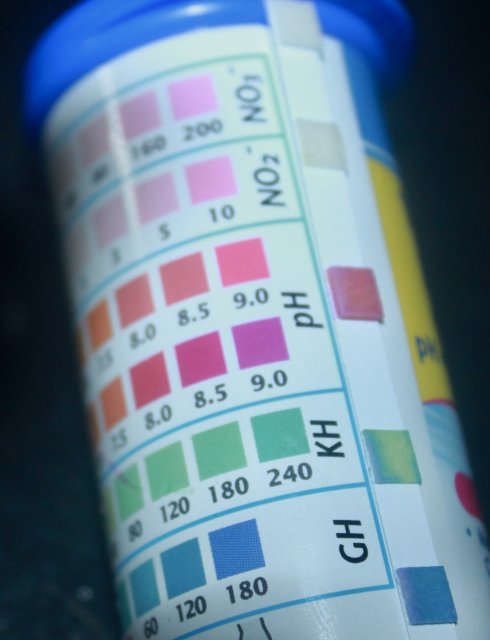HITH Oscar...help please
- Thread starter PowerofPain
- Start date
You are using an out of date browser. It may not display this or other websites correctly.
You should upgrade or use an alternative browser.
You should upgrade or use an alternative browser.
I agree that the ph is too high for an Oscar. What is the ph reading coming out of your tap water? Do you use any substrate/decor that raises ph in your tank?
It is coming out of the tap the same as in the tank...8.2/8.4
Should I try the seachem 7.0 regulator or almond leaves?
I would use the almond leaves instead of sea chem regulator. Almond leaves are very beneficial for South American aquariums. You can also add some pieces of driftwood to release tannins and lower ph slightly.It is coming out of the tap the same as in the tank...8.2/8.4
Should I try the seachem 7.0 regulator or almond leaves?
My 2 Oscar’s are in a high ph tank. PH 8. They have been for 4 years. As they have gotten older one is pre- disposed to some pitting on the forehead. The other gets some discoloration around the head but no pits. Otherwise they are vibrant healthy fish. I have found that when I add 2 or 3 almond leaves with water changes it seems to help. Keeps it in check and reduces it.
I do 90% water changes once a week.
I do 90% water changes once a week.
My 2 Oscar’s are in a high ph tank. PH 8. They have been for 4 years. As they have gotten older one is pre- disposed to some pitting on the forehead. The other gets some discoloration around the head but no pits. Otherwise they are vibrant healthy fish. I have found that when I add 2 or 3 almond leaves with water changes it seems to help. Keeps it in check and reduces it.
I do 90% water changes once a week.
I ordered peat granuales and almond leaves. My question is when you do water changes.....the high ph water coming in from tap doesnt make too much
of a ph change for the oscars in the lower ph with almond leaves?
When you do only minimal water changes, the build up of a buildup of nutrients, in combination with a high pH is what encourages HITH.
I try to do 30% to 40% every other day, and have been doing this routine for over 20 years, and have not seen HITH since,.
Before I started this rigid routine, the soft water fish I tried would occasional ly get infections as time passed.
I have seen medications advised, but they do not get to the root of the problem, and since HITH is chronic, it does not happen over night.
It starts to show up just as large fish mature and you are expecting them to look their best (but it can show up sooner, the higher the pH and conductivity).
With oscars, it usually seem to start presenting at about 2 years of age.
The tannins from leaf litter, peat, or Reiboos tea have anti bacterial properties that help.
Because tannins are organic, the things that produce tannins, need to be replaced.
I experimented with almond leaves, because I wanted to see if the efficacy rumors were relevant.
 www.monsterfishkeepers.com
When in the states, I was experimenting with some soft water killifish, and found if I put enough leaf litter in the tanks to about 1/4 of the tanks volume, it helped
www.monsterfishkeepers.com
When in the states, I was experimenting with some soft water killifish, and found if I put enough leaf litter in the tanks to about 1/4 of the tanks volume, it helped
But in this case it was not to stop HITH (their life span was too short to get such a chronic disease)
It was to give the proper conditions to encourage breeding.
I also mixed low pH rain water into their small tanks, due to my high pH tap water.
I also find heavily planted tanks, or sumps help.
With cichlids planting their tanks can be problematic (especially with vegetarians like pearsei)
In cases like that. I plant the sumps that filter their tanks.
Below the sump, that filters my current Panamanian cichlid tank.

I try to do 30% to 40% every other day, and have been doing this routine for over 20 years, and have not seen HITH since,.
Before I started this rigid routine, the soft water fish I tried would occasional ly get infections as time passed.
I have seen medications advised, but they do not get to the root of the problem, and since HITH is chronic, it does not happen over night.
It starts to show up just as large fish mature and you are expecting them to look their best (but it can show up sooner, the higher the pH and conductivity).
With oscars, it usually seem to start presenting at about 2 years of age.
The tannins from leaf litter, peat, or Reiboos tea have anti bacterial properties that help.
Because tannins are organic, the things that produce tannins, need to be replaced.
I experimented with almond leaves, because I wanted to see if the efficacy rumors were relevant.
Experiment w Almond Leaves
There are at least 2 almond trees on the island where I live, and after todays 4 hour storm, I collected about a half dozen fallen leaves . These were dropped in my tank (180 gal with a nearly full 125 gal sump) still floating a couple hours later Initial pH was measured 3 times with 3 aliquots...
But in this case it was not to stop HITH (their life span was too short to get such a chronic disease)
It was to give the proper conditions to encourage breeding.
I also mixed low pH rain water into their small tanks, due to my high pH tap water.
I also find heavily planted tanks, or sumps help.
With cichlids planting their tanks can be problematic (especially with vegetarians like pearsei)
In cases like that. I plant the sumps that filter their tanks.
Below the sump, that filters my current Panamanian cichlid tank.

Last edited:
I ordered peat granuales and almond leaves. My question is when you do water changes.....the high ph water coming in from tap doesnt make too much
of a ph change for the oscars in the lower ph with almond leaves?
To be honest, it's a losing battle with hard water. The most I've gotten to was 7 years in hard water with no signs of HITH. I was adding in Laguna liquid peat, which is why I was able to keep it off for so long. Once stress hits a certain point, sickness will set it. From then on it would heal and then come back. The best solution is make RO water and mix it with tap so the ideal total dissolved solid (TDS) is around 50ppm. This is the TDS solid level for soft water. You can get by with 100ppm but that's hitting moderately hard water.
Hard water does not equal PH. PH is a measure of how basic and how acidic the water is.
Last edited:
AgreeTo be honest, it's a losing battle with hard water. The most I've gotten to was 7 years in hard water with no signs of HITH. I was adding in Laguna liquid peat, which is why I was able to keep it off for so long. Once stress hits a certain point, sickness will set it. From then on it would heal and then come back. The best solution is make RO water and mix it with tap so the ideal total dissolved solid (TDS) is around 50ppm. This is the TDS solid level for soft water. You can get by with 100ppm but that's hitting moderately hard water.
Hard water does not equal PH. PH is a measure of how basic and how acidic the water is.
After I figured my U.S. tap water was not great for keeping species that prefer soft, low conductivity, low TDS, water, I stopped trying to keep large species like Oscars, and Uaru, and other Amazonian types altogether.
Killifish were the exception, because I could store enough rain water for their adequately tiny tanks.
When you compare much of the water from South America (east of the Andes), with water the general water parameters in Central America.
The difference is quite apparent.

 .
.Even in southern Panama (where I now live) even the rain has app of 8.2.
And my tank parameters reflect that mineral content.

Last edited:


